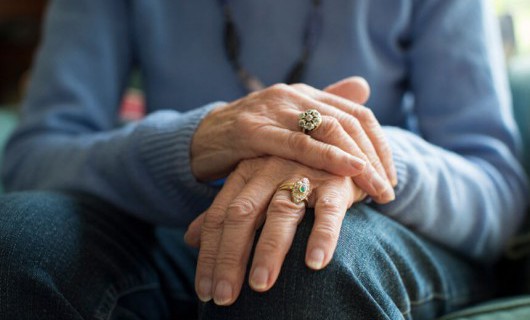Our interest, shock and sense of moral panic about knife crime has been heightened in the last 18 months, especially in London. Unless you have been living under a tree, our daily news is filled with the latest devastating and utterly shocking stories about knife crime. "Boy, 12 stabbed to death near school", "Boy who stabbed teenager in the heart fled scene on Boris Bike" and "Stabbing victim was mild mannered grandfather who called for his wife". With media coverage continually highlighting the specific crimes taking place across the capital, and how it is reaching 'record levels', moral panic is rising to boiling point.
As a researcher, I wanted to understand more about this issue. I wanted to find out if this panic is justified. As always, I started with the data.
So what did the data tell me?
I wanted to start by finding out whether the increase in moral panic about escalating rates of knife crime is really justified? Is knife crime really rising at the rate that we are led to believe?
Unfortuantly the data for 2019 won't be available until March next year, but data for 2018 shows that offences involving knives or other sharp objects have increased - by 16% from the year before (2017), reaching a total of 40,147 offences recorded across England and Wales (285 of these are deaths from knife offences). Are most of these in London? No. The majority of police forces (36 out of 44 forces) have reported a rise in knife offences - so this isn't just a London issue. But looking at these stats, regardless of where you live and work, maybe the panic is justified. The figures are up.
But this is when it gets interesting. When looking at London specifically, 32% of offences took place in the capital. For every 100,000 people, there were 169 knife-related offences. However, when compared to previous years, this represents a 1% increase in recorded knife offences in London from the year before. No one can deny that 86 deaths from knife crime in the capital is shocking and high - even one is too many - but their rates are increasing by 1%. So does that mean other parts of the country are contrinuting to the rise in knife offences?
About moral panic.
Alongside the reporting of incidents comes a societal sense of moral panic about knife crime. This moral panic stems from two main reasons: firstly, the sense of uncertainty and fear that comes with the 'unknown'. We start to feel more uncertain about the people surrounding us in public - am I really safe here?
Secondly, it's linked to the fear about what the increase in knife crime ultimately tells us; that is, the issues from which knife crime tends to be a 'symptom': poverty, social isolation, mental health issues, drug abuse, lack of opportunity. These issues are often more prevalent amongst younger men in society, and the data does show that a quarter of deaths from knife crime in 2018 were men aged 18 - 24. It's perhaps what knife crime says about our society that worries us the most. That people feel the need to carry knives in the first place speaks volumes about how we feel about the state of our communities.
Knife crime is not a new issue
Like many social issues that capture our attention and spark a sense of urgency to address, dramatic increases in the rates of knife crime is not new i'm afraid to tell you. In 2015 the media again highlighted that knife crime across England and Wales had risen for the first time in 4 years. In 2008, it was believed that crime had reached peak levels. In 2006, the then home secretary called a crisis meeting to tackle knife crime following the death of special constable Nisha Patel-Nasri who was stabbed outside her home. I could go further back in time, but I think the overall message is clear: every few years, we believe that we have reached a crisis point with knife crime. We just keep going around in circles with this issue.
What can be done differently to address it?
To actually tackle the issue, we need to be asking; 'what can we do to tackle the underlying causes of knife crime to address this epidemic successfully?'. In fact, the language of 'underlying causes' and 'epidemic' highlights exactly what the answer might be - shifting the perspective to frame the issue, and therefore the model to address it, as one of public health.
Public health model
The public health model frames the issue at a holistic level, with a focus on whole population change (rather than a focus on some individuals) to encourage prevention at its core by tackling the causes of the 'symptom' of knife crime; the underlying inequalities in a population.
Using the public health model gives 3 main levels of prevention which often form the whole system approach:
- Primary prevention (those at risk) - reduce access to knives, alcohol and drug programmes awareness-raising campaigns;
- Secondary prevention (early incidence and those with specific risk) - action to address truancy, gangs, school exclusion, mental health issues;
- Tertiary (established incidence) - recovery and rehabilitation programmes.
This shift in model has been underway for over a decade now. Starting in America, it's made it's way to the UK, first in Glasgow (which in the early part of the millennium was known as the 'murder capital' of Europe following a World Health Organisation report). Now it's come to London.
In September last year, the Mayor of London established the Violence Reduction Unit (VRU) to embody the appraoch of treating violent crime as a public health issue. The Unit is bringing together experts across a range of specialisms (police, social mobility, health, education, local government and community organisations) to tackle the causes of violent crime at the root. As a researcher, I find it even more promising that it is data-driven using health and justice data to identify risks in children's lives. I think we might actually get somewhere this time.
Conclusion
While there is still a big role for individual measures, such as education, campaigns, robust sentencing and police numbers, it will be the whole system public health approach that will effectively get to grips with the real issues behind knife crime to deliver longer-term success. In Glasgow, since the establishment in 2005 of it's VRU, there has been a dramatic decrease in rates of knife crime, and in 2017, of all the deaths from knives amongst children and teenagers, none were in Scotland. It may take time, but ultimately a shift in approach should help to address the interconnected issues that often result in knife crime and the corresponding moral panic.
Only time, no sorry, I mean data, will tell.



